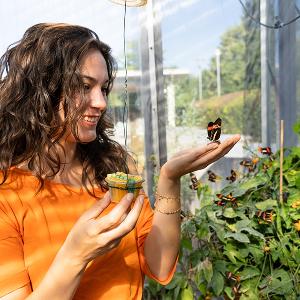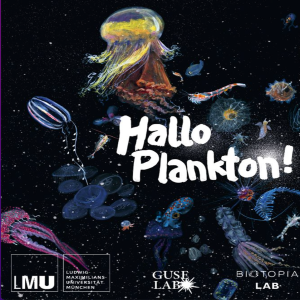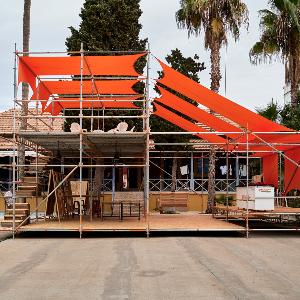Center for Life Science in Society
Exploring Encounters between the Sciences and the Arts

Exploring Encounters between the Sciences and the Arts


Pop-up exhibition at Biotopia Lab until July 20!

© Fabian Gasperl
The life sciences play a central role in dealing with the challenges of our times, while raising complex questions: How can we preserve and promote biodiversity? How can the use of gene editing be negotiated in society in democratic ways? And how can we better deal with global pandemics? To find answers, we need a stronger integration of current research and public discourse.
The Center for Life Science and Society (CeLSS) aims to investigate these interrelated science-society relationships and to strengthen them by using innovative and participatory formats. In doing so, we pursue interdisciplinary - between scientific disciplines - and transdisciplinary approaches - beyond science with other partners.
The focus here is on testing, expanding and communicating synergies between the life sciences, social sciences and humanities, as well as art and design. The social sciences and humanities are relevant because they research the interplay between science and society, while arts and design are also becoming increasingly important, e.g., in science communication, and to reflect the (social) role of the life sciences.
The center enables concrete contact zones ('Encounters') between these areas in order to promote inter- and transdisciplinary cooperation on an equal footing, and to utilize the creative and innovative potential of this cooperation. In this way, the center contributes to an international trend whereby life sciences faculties research and teach at the interface between society and the arts.
About:
The Center for Life Science and Society (CeLLS) is headed by Prof. Annika Guse (life sciences) and Dr. Mascha Gugganig (social sciences and humanities). Both have a strong connection to art: Annika as co-founder of the Arts & Science project ¡vamos, simbiosis! and Mascha with extensive experience in the development of art-based research methodology and the curation of scientific exhibitions.
Art-Science Project “vamos, simbiosis“ is a transdisciplinary project that explores the relationship between humans and the sea from different perspectives, with the aim to communicate the profound significance of our oceans to society through the arts.
Seminar „Discuss and Communicate Biodiversity” BA seminar where students learn about life science, social science and humanities approaches to biodiversity research in theory and practice; which analytical concepts are used, which methods? Students also learn how to communicate the collected data in creative science communication formats.
Symposium „Encounters between Art and Biology“ took place on June 12th 2024 at the LMU Faculty of Biology (Chair of Life Sciences in Society), and explored art-science collaborations in the life sciences along four projects.
Citizen Science and Art Project „Dawn Chorus“ invites citizens to record bird songs for scientific and artistic work via an app, thereby raising awareness of biodiversity and species conservation.
Research and science communication format „Visual Vignettes“ is a multimodal image-text format for use in scientific research and science communication, with an introductory text. As an example, see Laura Kuen's ‘The Freedom of the Forest.’
Children’s book „Hallo Plankton!“ is a captivating and educational children's book. This richly illustrated work, created in collaboration with leading scientists, takes young readers on a fascinating journey through the microscopic world of plankton. Combining scientific accuracy with engaging humor, the book aims to foster environmental awareness and a love for marine biology. Nominated for the Deutscher Jugendbuchliteraturpreis 2025
Transdisciplinary Design Workshop „Digital Biodiverse Agriculture“ was a participatory workshop for small-scale, biodiverse farmers in Munich (2023), where speculative design was used to rethink the role of digital technologies in agriculture. The workshop was inspired by similar workshops organised as part of the Canadian research project “Diversity by Design” (co-led by Kelly Bronson and Mascha Gugganig, University of Ottawa).
BIOTOPIA Lab and Naturkundemuseum Bayern is at the Botanical Institute and part of the future Natural history museum Bavaria (part of SNSB). As an experimental place for science communication and public engagement with nature and the environment, it combines exhibition, workshop and event space in one.
“Rachel Carson Center for Environment and Society” at LMU is a leading international research Centre in Environmental Humanities, studying the relationship between human and the environment.
Munich Science Communication Lab (MSCL) is an initiative at the interface between science and science communication, which combines research and practice in science communication.
‘Art the IES’ is the Helmholtz Munich Artist-in-Residence Program at the Institute for Epigenetics and Stem Cells (IES) coordinated by Prof. Maria-Elena Torres-Padilla, which demonstrates the relevance of science for society through art.
The ‘Department of Science, Technology and Society’ at the Technical University Munich (TUM) is the largest and leading institute for science and technology studies (STS) in Germany and researches the intersecting spheres of science, technology and society.
The ‘ETHOS Lab’ is a feminist methods laboratory based at the IT University of Copenhagen at the interface of digital methods, ethnographic research and ‘speculative fabulation’ (inspired by Donna Haraway), which is to question how we create (scientific) knowledge.